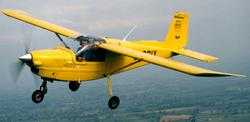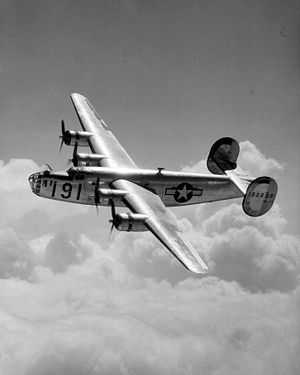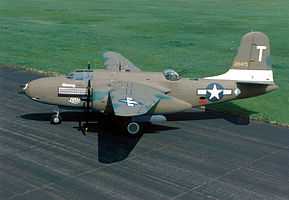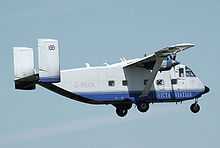Shoulder wing
| Shoulder wing | |
|---|---|
 An ARV Super2 with a shoulder-wing. |
A shoulder wing (a category between high-wing and mid-wing) is a monoplane aircraft wing configuration in which the wing is mounted near the top of the fuselage, but not on the top.[1]
Shoulder wing designs include a wide range of aircraft from pre-World War II airliners, World War II bombers and strike aircraft, through Cold War fighters, civil and military transports to light aircraft and gliders.
Terminology
In the 1920s the term "shoulder decker" was applied in Germany to note a monoplane where the wing was attached near the top longerons; the Junkers G.38 being an example.[2]
There seems to be a difference of professional opinion over this sub-category. For instance, Flight describes the Short SC.7 Skyvan, an apparent high-winged aircraft, as "shoulder-winged". Arguably, the shoulder-wing terminology is of useful significance only to small aircraft, such as the Saab Safari, Bölkow Bö 208 Junior and ARV Super2.[3]
A shoulder-wing is so called because it sits on the "shoulder" of the fuselage, rather than on the pilot's shoulder.
Shoulder-wing on light aircraft
The shoulder-wing has a particular advantage for smaller aircraft with a canopied cockpit, in that it gives the pilot unrestricted forward visibility, especially prior to and during turns.[4][5] Optimally, the shoulder-wing should be positioned at the level of the pilot's eyes, to minimise any obstruction to visibility from the wing.[3]
On a light aircraft, a shoulder-wing may need to be swept forward to maintain correct center of gravity.[5] Shoulder-wings and high-wings share two characteristics, namely: they support a pendulous fuselage which requires no wing dihedral for stability; and, by comparison with a low-wing, a shoulder-wing's limited ground effect reduces float on landing.[6][7][8]
Examples of shoulder wing aircraft
-

Bölkow Bö 208 Junior.[2]
- ^ "Saab Safari (advertisement)". Flight: 4. 30 October 1975.
- ^ Taylor, John W R (1966). Jane's All the World's Aircraft 1966-67. London: Sampson Low, Marston & Co. Ltd. p. 67.
- ^ "Two Four-engined Transports : Liberator and A.W. Ensign". Flight XLI (1725): a. 15 January 1942.
- ^ "Aircraft In Flying Attitudes". Flight XLV (1849): 587. 1 June 1944.
- ^ "Two Unusual Bomber Tails : The Botha and Boston III". Flight: g. 11 December 1941. Retrieved 27 August 2011.
- ^ Gaines, Mike (23 April 1983). "Inshore maritime market". Flight International: 1122.
See also
References
- ↑ Kumar, Bharat (2005). An Illustrated Dictionary of Aviation. New York: McGraw Hill. ISBN 0-07-139606-3.
- ↑ "The Junkers G.38" Flight, November 29, 1929
- ↑ 3.0 3.1 Flight International (March 1975). "High Wing, Low Wing". Retrieved 25 August 2011.
- ↑ "Pilot" magazine February 1986, page 32
- ↑ 5.0 5.1 "Air Pictorial, ARV Super 2". Docs.google.com. Retrieved 2012-07-18.
- ↑ "Ground Effect in Aircraft". Aviation-history.com. 2009-11-30. Retrieved 2012-07-19.
- ↑ "Ground Effect". Avweb.com. 2003-10-22. Retrieved 2012-07-19.
- ↑ "Ground effect in aircraft". Sccs.swarthmore.edu. Retrieved 2012-07-19.
| ||||||||||||||||||||||




